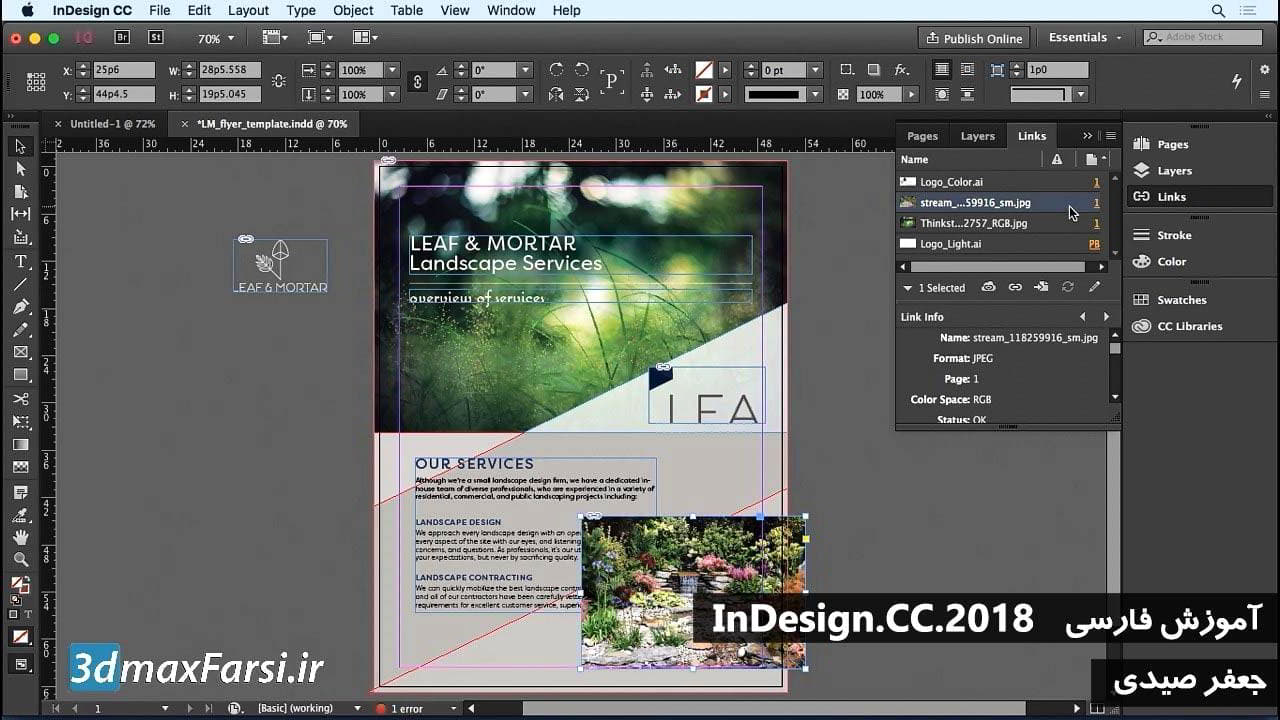فیلم آموزش نرم افزار ایدنیزاین Adobe InDesign Learning terminology type

اکنون، وقت آن رسیده تا برخی اصطلاحات اساسی نوع را بیاموزیم. این همه اصطلاحات و تعاریف است که شما هر وقت با تایپوگرافی کار می کنید می شنوید، و من فکر می کنم آنها بسیار مهم هستند. اول از آن واحد اندازه گیری چندگانه است. پیکا پیکا یک واحد اندازه گیری است که عموما خطوط متن را اندازه می گیرد. یک پیکا برابر با 12 امتیاز و شش پیکا برابر با 1 اینچ است. حالا، یک نقطه چیست؟ خوب، یک نقطه به سادگی واحد واحد اندازه گیری برای فونت است. 72 امتیاز برابر با 1 اینچ است. بگذارید آن را در دیدگاه قرار دهم و در اینجا مقیاس را به شما نشان دهم. در اینجا، هر دو در صفر در سمت چپ، پیکا و نقاط، تمام راه تا 1 اینچ. 72 امتیاز برابر است با 1 اینچ، 6 پیکا برابر با 1 اینچ، و شما می توانید تمام مقادیر مختلف بین مقیاس را ببینید. منتهی شدن. این یک اصطلاح دیگر است که اغلب هنگام کار با نوع کار می کنید. رهبری تنها اساسا فاصله بین خطوط متن است. این فاصله، در نقاط اندازه گیری شده، از یک خط پایه به دیگری اندازه گیری می شود. ردیابی ردیابی فضای بین کاراکترها در کل یک بلوک متن است. Kerning, on the other hand, is the distance between two individual characters within a block of text. For instance, when we have this word "type", the space in between all of the letters as a whole refers to tracking, whereas if we were referring to the space in between the P and the E, that would be referred to as the kerning. You can have a separate set of tracking for an entire block of text, yet still need to kern an individual set of characters in order to make type look like it's set in proportion. A glyph. A glyph is a representation of each character within a given typeface. Some typefaces offer more than one glyph for certain characters. In applications like Illustrator, Photoshop, and InDesign, you will see a glyph palette. This palette allows you to select from several of the different characters. Oftentimes, a glyph panel is also where you will gain access to things like icon fonts. Let's take a look at an example of a glyph. Here is a cursive letter L. This is a glyph of that same character, taken from the glyphs panel inside of an application. As you can see, it follows the same basic form of the L, but it has some stylistic alterations. As I said before, these are just some of the key terms that you will need to know when you're dealing with typography. I think that if you know these basic terms, accompanied with the terminology that we discussed in the anatomy of type lesson, you will be well on your way to fully understanding all of the different ins and outs of typography.

